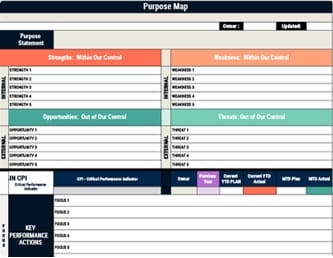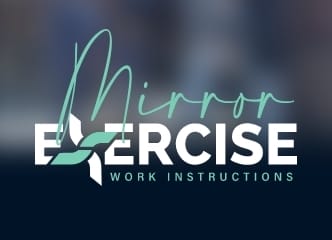To align distributed teams, you’ll start by turning company strategy into clear, shared outcomes, then express them as team-level OKRs that drive daily priorities and accountability. You’ll set crisp check-in cadences, define roles and decision rights, and standardize asynchronous communication to reduce ambiguity. You’ll track metrics with lightweight dashboards, close feedback loops, and refine processes continuously, supported by secure, compliant tools. Next, you’ll map strategy-to-execution so every contributor understands the why and the how.
Key Takeaways
- Translate company strategy into team-level OKRs with 3–5 measurable key results, DRIs, and clear timelines to align outcomes.
- Establish weekly or bi-weekly alignment cadences, with async daily updates and documented decisions for time-zone continuity.
- Explicitly define roles, responsibilities, and decision rights to enable autonomy and prevent misalignment.
- Standardize communication protocols, feedback loops, and retros; publish weekly written updates and track actions, owners, and deadlines.
- Use an integrated, secure tool stack with SSO/MFA, workload tracking, and automated risk alerts to maintain alignment and compliance.
Defining Goals and Shared Outcomes
Although your team may be spread across time zones and functions, start by defining exactly what a “win” looks like and make it visible to everyone, because clarity beats proximity in driving alignment.
You’ll avoid misalignment by defining goals that state outcomes, scope, and timing, then publishing them in the tools your remote teams already use.
Involve people in collaboration when shaping shared outcomes, since engagement rises when contributors help decide what matters and how success is measured.
Name Directly Responsible Individuals (DRIs) for each outcome to concentrate ownership, streamline decisions, and strengthen accountability.
Tie every goal to the company vision so daily work ladders to long‑term direction.
Explain how this direction supports career growth, clarifying skills to build and impact to demonstrate, improving team performance.
To sustain alignment and motivation across distance, establish regular OKRs reviews and feedback loops that make progress visible and connect daily work to strategic objectives.
Translating Strategy Into Team-Level OKRS
Because strategy only matters when it shapes daily work, translate company priorities into team-level OKRs by starting with a clear, plain-English objective that mirrors a strategic theme and describes the value you’ll create for customers or the business.
Map each objective to the organizational strategy, then define three to five measurable key results that indicate real outcomes, not activity.
Map each objective to strategy, then set 3–5 measurable key results that capture outcomes, not activity.
In remote teams across a distributed workforce, state “what a win looks like” with precise metrics to drive alignment, communication, and accountability.
Involve the team in drafting Objectives and Key Results, since collaboration builds ownership and surfaces risks early.
Keep team goals ambitious yet realistic to prevent burnout.
Use lightweight performance tracking for transparency, ensuring everyone sees progress, dependencies, and tradeoffs, and refine scope when evidence changes.
Additionally, establish regular governance rhythms to review OKR progress and adjust plans, reinforcing alignment and accountability across distributed teams.
Designing Cadences for Alignment and Check-Ins
When you design cadences for alignment and check-ins, anchor them around predictable rhythms that match your team’s work cycles, then layer in lightweight mechanisms to keep momentum between meetings.
Set weekly or bi-weekly alignment check-ins to reinforce team cohesion, confirm explicit goals, and assign Directly Responsible Individuals for each outcome.
Use asynchronous communication in Slack or Teams for daily updates, blockers, and quick decisions, so you avoid unnecessary meetings while maintaining visibility.
Incorporate structured feedback sessions monthly to surface performance issues early and agree on concrete next steps.
Add workload tracking to each cadence, reviewing capacity, priorities, and risks, which helps prevent burnout and improves productivity.
In a remote work environment, publish notes, decisions, and owners immediately, ensuring continuity across time zones.
To reinforce execution discipline, incorporate clear objectives and measurable KPIs, using frameworks like OKRs to turn broad goals into actionable steps and keep distributed teams aligned.
Clarifying Roles, Responsibilities, and Decision Rights
Strong cadences only work if everyone knows what they own, how they contribute, and who makes which calls, so start by documenting roles, responsibilities, and decision rights as explicitly as you document schedules.
Define scope for each role, write clear expectations, and map handoffs, since distributed teams rely on written clarity to avoid misalignment. Assign a Directly Responsible Individual to every task to anchor accountability and reduce ambiguity.
Cite decision rights for common scenarios—who approves budgets, prioritizes work, or ships changes—to promote autonomy and effective remote management without micromanagement. Align these practices with remote work policies, including how updates are recorded and accessed.
Revisit goals and responsibilities regularly, especially in hybrid contexts, because evolving work surfaces gaps. Done well, clarifying roles boosts productivity and stabilizes team dynamics.
To reinforce clarity and collaboration, ensure both vertical and horizontal coordination, since balanced organizational alignment improves decision-making and drives faster revenue growth.
Asynchronous Communication Standards and Rituals
Although distributed teams can default to ad hoc messaging, you’ll get better results by setting explicit asynchronous standards and lightweight rituals that let people contribute on their own schedules while maintaining momentum.
Use asynchronous communication to let remote team members work across time zones without blocking others, which boosts productivity, flexibility, and employee engagement.
- Define communication standards: specify channels, message formats, and expected response windows for routine and urgent topics.
- Require weekly written updates that summarize progress, risks, and decisions, increasing transparency and trust.
- Use virtual check-in videos or voice notes to build personal connections and a sense of belonging while staying asynchronous.
- Create templates for proposals, status notes, and handoffs to reduce ambiguity and speed review cycles.
- Encourage thoughtful documentation and searchable threads so distributed teams can find answers without meetings.
Add a simple visual management layer by posting weekly updates on a shared board that highlights KPIs using the 1-3-10 rule so anyone can see status, issues, and owners at a glance.
Metrics, Dashboards, and Accountability Loops
Clear asynchronous rituals set the cadence, and metrics translate that cadence into measurable outcomes you can steer. Use output-focused KPIs that favor results over activity, since remote teams see higher project completion—often around a 23% lift—when you measure delivered value instead of hours.
Build dashboards that show individual and team performance, making contributions visible, motivation tangible, and accountability concrete. Increased visibility through visual management tools encourages collaboration and informed decision-making, enhancing productivity.
Pair those views with a simple communication rhythm: weekly written updates, brief team meetings, and structured check-ins that surface workload risks before burnout spreads.
Let people propose their own metrics tied to goals, then calibrate them with you for fairness and clarity; this increases engagement, ownership, and productivity without sacrificing alignment.
Keep dashboard thresholds and definitions explicit, document who reviews which signals, and schedule recurring ownership reviews to close loops.
Feedback Systems and Continuous Improvement
When feedback becomes a predictable system rather than an occasional event, distributed teams gain the clarity and cadence they need to improve week over week.
You’ll anchor feedback systems in clear communication protocols, regular check-ins, and defined loops that turn insights into action, which strengthens team cohesion and lifts employee engagement by measurable margins.
- Run weekly 1:1s and retros that focus on outcomes, using performance metrics tied to project completion rates, not hours worked.
- Standardize agendas and response times, so remote workers know when and how to surface blockers and decisions.
- Offer anonymous feedback channels to reduce fear, and publish synthesized themes to reinforce organizational culture.
- Close the loop by documenting actions, owners, and deadlines, then reviewing progress publicly.
- Iterate quarterly, adjusting cadences and formats as team dynamics evolve, driving continuous improvement.
Additionally, align feedback cycles with Six Sigma practices like DMAIC to systematically measure progress, reduce process defects, and sustain operational excellence across distributed teams.
Tools, Security, and Compliance for Distributed Operations
Your feedback loops only work at scale if the underlying tools, security posture, and compliance practices are designed to support them.
So start by standardizing a communication stack that integrates chat, video, docs, and task tracking. Then enforce access controls and data retention policies that match how your team collaborates.
Choose digital collaboration platforms with SSO, MFA, encryption, and audit logs, and train remote employees on secure handling of data.
Define performance guidelines centered on outcomes, connect them to dashboards, and automate alerts for risks or delays. In addition, ensure your tools and processes reinforce organizational alignment by promoting clear communication, shared values, and measurable objectives across distributed teams.
Address compliance by mapping labor laws for each location, documenting policies, and scheduling audits.
Use an Employer of Record (EOR) to manage payroll, benefits, and localized obligations.
Continuously collect employee feedback and adjust hybrid work arrangements to stay compliant and effective.
Frequently Asked Questions
How Do We Budget for Remote Team Alignment Initiatives?
Allocate a fixed annual percentage of payroll, then break it into training, facilitation, tools, and time costs.
Price workshops, async documentation platforms, and meeting facilitation, and include stipends for ergonomic gear and bandwidth.
Budget leader hours for prep and follow‑ups, plus quarterly retrospectives.
Fund measurement: engagement surveys, OKR tracking, and alignment health metrics.
Pilot small, evaluate impact, then scale.
Reserve a contingency buffer, and renegotiate vendor contracts annually to optimize spend.
What Legal Considerations Apply to Cross-Border Remote Employment?
Like steering a ship through shifting tides, you must navigate employment status, tax withholding, and permanent establishment risks.
Verify worker classification, register as a foreign employer if required, and handle payroll, social security, and benefits per local law.
Comply with labor standards on hours, leave, termination, and mandatory agreements.
Address data privacy (GDPR), IP ownership, and invention assignments.
Use localized contracts, track immigration/work authorization, and consider an EOR/PEO to reduce compliance exposure.
How Should We Manage Time Zone Pay Equity and Compensation Bands?
Anchor compensation to role, level, and market benchmarks, not time zones, then define location tiers based on reliable cost-of-labor data.
Publish transparent salary bands per level and tier, and document how currency, COL differences, and premiums for scarce skills apply.
Avoid “time zone pay” policies; instead, compensate for inconvenient hours via stipends or shift differentials.
Review bands semiannually, guarantee parity with internal peers, and enforce offers within bands using structured exceptions and approvals.
How Do We Support Mental Health and Prevent Remote Isolation?
You support mental health and prevent isolation by normalizing flexible schedules, funding therapy benefits, and training managers to spot distress, then act with clear referral paths.
You create intentional social touchpoints—buddy systems, opt-in interest groups, and regular small-group check-ins—while discouraging always-on culture with quiet hours and documented norms.
You provide ergonomic and wellness stipends, promote virtual coworking for accountability, measure well-being via pulse surveys, and close the loop with transparent improvements.
What Onboarding Practices Accelerate Culture Adoption for Distributed Hires?
Hit the ground running by pairing hires with a buddy, a manager, and a cross‑functional mentor, then give a 30‑60‑90 plan tied to values and outcomes.
You run a structured first week: live culture briefing, tool walkthroughs, and team rituals.
Provide a glossary, decision principles, and examples of past wins.
Schedule cohort onboarding, shadowing, and small shipping tasks.
Automate checkpoints, capture questions in a playbook, and measure assimilation with surveys and retros.
Conclusion
You’ll keep distributed teams aligned by setting clear goals, translating strategy into team OKRs, and running steady check-ins that surface risks early. Define roles and decision rights, establish concise async standards, and maintain dashboards that tie metrics to ownership. Build feedback loops that drive small, frequent improvements, and choose tools that meet security and compliance needs. Treat alignment like a compass in fog, because consistent rituals, transparent data, and clear responsibilities guide everyday decisions toward shared outcomes.



